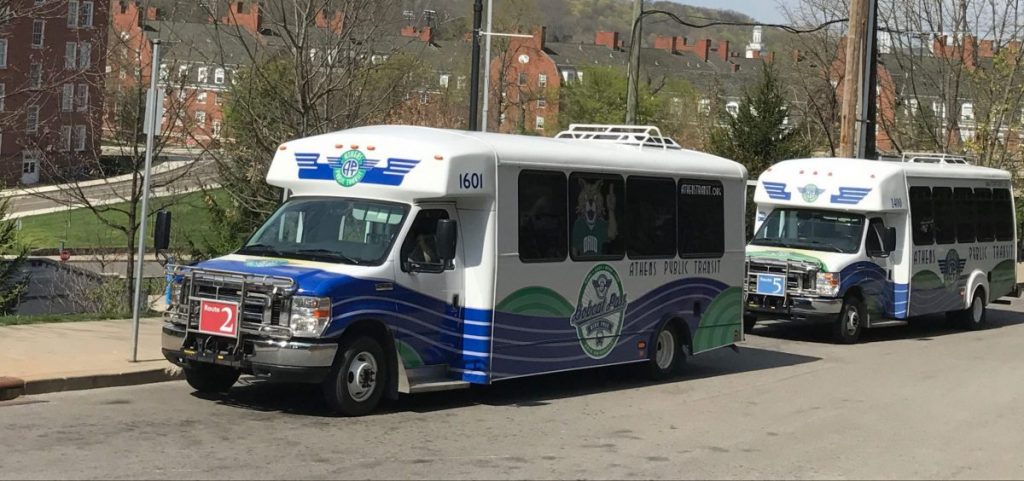News
A report highlights how a lack of transportation options can keep southeast Ohio families in poverty
By: Theo Peck-Suzuki | Report for America
Posted on:
ATHENS, Ohio (WOUB/Report for America) — It’s hard to go anywhere in southeast Ohio without a car, and the region’s low-income residents are paying the price.
According to the 2023 State of Poverty in Ohio report, the state’s reliance on private vehicles puts significant strain on families who are struggling financially.
“Cars are expensive. Repairing cars is expensive,” said Ohio Association of Community Action Agencies Executive Director Philip Cole.
Many in southeast Ohio don’t have the money to keep up with those expenses. Some have to go to great lengths to balance the costs of transportation and groceries.
School outreach worker Becky Handa sees the challenge firsthand during her weekly summer food distribution at Trimble Middle-Elementary School.
“I see people come together, different parents coming together in one car to reduce the cost of gas,” Handa said.
Others rely on neighbors to go pick up food in their place. Handa usually makes a few deliveries herself.
“I’ve had somebody come and pick up for an entire street,” Handa said.
Stories like this are common in southeast Ohio.
The question of how to get somewhere — be it the grocery store, a doctor’s office, or a job — is a constant worry for low-income residents. Car trouble can quickly spiral into something worse if it means missing a shift or appointment.
Cole argues the solution is to provide better funding for public transit statewide.
According to the poverty report, Ohio spends a mere $6 per capita on public transportation, one-tenth the national average. Of Ohio’s 88 counties, 25 have no public transit whatsoever.
The consequences are more severe for low-income residents, the report argues, because they can’t afford housing close to where they work.
Hocking Athens Perry Communication Action Transportation Director Carolyn Conley said she sees that pattern in southeast Ohio.
“As the prices go up, you know, rent, mortgages, everything goes up, people are kind of pushed out further into these more rural, more isolated areas,” she said.
Conley’s organization runs public transit systems in Athens and Hocking counties and manages GoBus, a service which connects Athens to major cities in Ohio.
“We’re fortunate in that, for Athens County in particular, I think Ohio University is a big driving force for that,” said Conley.
However, there are many areas those services don’t reach. Conley said further investment at the state and local level could change that.

Demand response means sending a vehicle out to pick people up directly. According to Conley, that’s more effective in rural areas than pre-planned routes.
“I’d like to see public transportation expand more in hours and more into the evening hours, as well as weekend hours,” Conley added. “A lot of the jobs in retail, restaurants, things like that — they’re evening (jobs). And transportation typically stops running at some point.”
The state and some local governments have ways to further invest in public transit. For example, the Central Ohio Transit Authority, which serves the greater Columbus area, uses a sales tax to provide steady revenue at the local level. The federal government matches all state and local funding.
Conley said some localities can’t raise the money on their own, especially in southeast Ohio.
“For example, our neighbor to the south, Meigs County. What tax base, what partners do they have to come up with that 50% (of overall funding)?” Conley observed.
While support from the state still lags behind the national average, Conley said it has improved significantly since she started in this field 13 years ago.
“I think we’re finally, through advocacy and telling people’s stories, kind of chipping away to make the state of Ohio understand the importance of this,” Conley said.
She noted that the most recent biennial budget gave a modest increase to public transportation despite some efforts to cut funding significantly.
“The way I see transportation is, it’s giving people bootstraps to pull up on. If they’re in poverty or near the poverty line, or just facing a rough patch, if they have that access to public transit, it gives them something to be self-sufficient. It is a tool where they’re not relying on friends, family or other assistance to be able to access the things they need,” Conley said.

